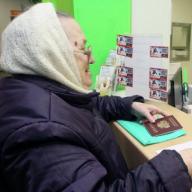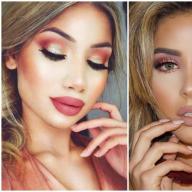Hello! My name is Maria, I am 23 years old, I live in Barnaul. I would like to show off one of my first crochet works, inspired by my little son.
- A selection of crocheted children's blankets
The idea of a development cube came to my mind. I found a lot of different ideas online, some of which I applied in my work. And this is what I got.
Educational cube for my son. The edge size is 16x16. Acrylic, Hook No. 3.5.
In my work I used acrylic yarn, a hook No. 3.5, children's appliques, Velcro, as well as various beads, pebbles, shells and interesting buttons.

1 side (blue) – sky:
The sun is rustling
The cloud is thundering, the rain is shuddering
Helicopter - you can take the hero for a ride
Rainbow - ribbons of different textures
Sunshine, cloud, Velcro helicopter. Hero – children's applique Krosh.



Side 2 (green) – flower meadow:
Flowers on buttons - help the hero collect them, learn how to unfasten and fasten them, learn to count to five
The car is on the road - it can be tightened, you can give the hero a ride, the wheels are on Velcro - you can change them
House on a button - play "Who's Hiding?"
Hero – children's applique Bee.


3rd side (blue) – sea:
The ship is being pulled over
Fish on buttons - learning to unfasten and fasten
The bottom is made of shells and pebbles - you can move and count

4th side (lilac) – zippered pocket:
Learning to open and close a zipper

5th side (pink) – pocket with button:
You can fold removable appliques, we also learn how to unbutton and fasten a button



6th side (peach) – lacing, main geometric figures and colors:
Lacing - learning to lace and tie a bow
Basic geometric shapes on Velcro - learn the basic colors, attach the shapes to their place.
Thank you for your attention!
dana bem
Since my favorite hobby is Crochet, with his help I decided to create development cube for infants and toddlers preschool age.
Purpose of creation this manual - development fine motor skills of the fingers, enrichment of active and passive vocabulary, development of color perception.
On each side of the cube there is a certain kind of didactic exercise:
Children can get acquainted with their first geometric shapes.

On this side, children will be able to move the beads along the rope and finger them. Beads of various textures and shapes, which arouses the interest of children.


Children can assemble a pyramid, the parts of which are mobile and attached to a linden tree.


Children love to open various locks, packages, and fasteners. They also have this opportunity when playing. development cube. When opening the lock, children will be surprised in the form of smiling emoticons.

Everyone's favorite laces are also on one side cube.


On our cube There lives a little mouse, which, if desired, hides in a convenient pocket.
Publications on the topic:
 CHILDREN'S THEATER (Marisha Lapina) Our favorite theater With a little stage, He opens a fairy tale And makes friends with a children's book. Funny artists -.
CHILDREN'S THEATER (Marisha Lapina) Our favorite theater With a little stage, He opens a fairy tale And makes friends with a children's book. Funny artists -.
Game "Colorful Cube" Age of pupils: starting from middle preschool age Goal: development of correct color perception in children This game is not new, but I am.
 GCD summary for application in 2 younger group. Topic: “One cube, two cubes, here comes the turret!” Goal: To introduce children to the square shape.
GCD summary for application in 2 younger group. Topic: “One cube, two cubes, here comes the turret!” Goal: To introduce children to the square shape.
 Master class for teachers “Knitted finger theater” Sofia Kovaleva Finger theater knitted from leftover yarn for children.
Master class for teachers “Knitted finger theater” Sofia Kovaleva Finger theater knitted from leftover yarn for children.
 This toy can be used to reinforce colors and their shades, to develop thinking, and to teach physical development(throwing.
This toy can be used to reinforce colors and their shades, to develop thinking, and to teach physical development(throwing.
 Good day, dear colleagues, friends, guests of my page! Today I want to talk about how I made a decorative “lantern”.
Good day, dear colleagues, friends, guests of my page! Today I want to talk about how I made a decorative “lantern”.
From the first years of a child’s life, many parents take the choice of toys for him seriously. The toy should be safe, interesting and contribute to the development of the baby.
Description of the cube.
You can not only choose and buy a toy in a store, but also make it yourself. For example, a development cube according to the methods of B. Nikitin and M. Montessori. It is noteworthy that a child will be able to play with such a cube for a long time. When making it, the mother can take into account not only the child’s age, but also his favorite colors and shapes, and also come up with tasks that will be most interesting to the baby.
In the presented master class, a cube is made, each side of which is made in a separate color. Some of the sides are used to develop the perception of the surrounding world. For example, a rainbow-colored side with opening doors, behind which the sun “hides.”
Other parties provide for the completion of some task. For example, on the blue side you need to count the petals of a chamomile, on the lilac side you need to count the beads and put them in a grid. The tasks can be completely different: their complexity and essence depend on the mother’s imagination. Some of the elements of the cube are made of rustling materials; a small container with beads is placed inside one of the flowers - resulting in a so-called rattle.
How and from what to make a cube.
To make the developmental cube shown in the photo you will need:
Knitting thread"Iris". You can take any other threads you like and have on hand, but in this case the choice was made on “Iris”, since they are 100% cotton and come in a variety of colors. color palette, commercially available and inexpensive;
Crochet hook, sewing game, scissors;
Regular threads for sewing;
Cotton fabric;
A variety of rings, buttons, beads, small containers (for example, Kinder Surprise eggs);
Filler. You can use foam rubber, padding polyester or any other safe material as a filler for the cube. In this case, the cube is filled with polystyrene foam balls (these, for example, are used as filler in the manufacture of frameless). The balls rustle quietly, which is why the cube turned out “rustling.”
So let's get to work.
First of all, you need to decide on the size of the cube, and also think about the design of each side. In this case, the size of each side of the cube is 10 cm. Therefore, 6 different colored sides of the cube were knitted (each side is made separately) 10 by 10 cm.
Once the sides are ready, they need to be formalized. For each side separately, it is necessary to select or make figures for decoration. These can be buttons tied with thread and knitted small toys, inside of which you can place Kinder Surprise egg containers filled with beads.
As production progresses, the “developmental material” is attached to the sides of the cube using threads.
When the sides are decorated, it is necessary to make a base (it will be placed inside the cube), into which the filler will subsequently be placed. To make the base you will need cotton fabric.
The next step is to assemble the cube. To do this, all its bright sides must be combined together. In this example, they are sewn together with yellow threads using a crochet hook. A base with filler is placed inside.
Now the cube is ready. When making it, it is important to remember that the baby will explore the toy not only with his hands, but can also put it in his mouth. Therefore, all elements of the cube must be absolutely safe and securely fastened.


Good afternoon, dear residents of the Country of Masters! I'm sharing my latest work with you! The cube is knitted from cotton yarn, many of the leftovers are also used :) Inside the cube there are several kinders filled with beads, so it rattles quite happily. A loop is tied for hanging. This toy is still too early for us, but we will definitely grow into it!
There is a big cloud on this side.

It often rains from a cloud :) Developing fine motor skills, unfastening and fastening the zipper and removing and taking out the raindrops, at the same time we remember and learn songs and poems about the rain

I made the droplets from transparent beads. The threads are very strong (my husband tested them for tearing!), and the rain itself is sewn tightly, because safety comes first, since the toy is intended for a small child

After the rain, the cloud becomes white (and fluffy:)) The sun shines cheerfully, about which we also don’t forget to learn poems and songs, and also after the rain a rainbow appears, thanks to which we remember the colors

If desired, the cloud can be unfastened completely. Inside the sun there is cellophane that rustles when pressed

There is a house on the red side of the cube. We learn primary colors, count flowers, introduce the concepts of right-left, more-less, etc.

A little duck lives in the attic of the house.

And downstairs lives a good-natured cat who loves to greet guests. The cat is a thermal sticker, which I also sewed on for reliability. When it “rains,” the cat and the duck hide in their rooms. Here we train fine motor skills using buttons that we fasten and unfasten, and also teach the concepts of above and below.

On the blue side of the cube, a flower with a rustling peduncle has grown, with colorful butterflies fluttering around it.

When there is no rain, a well-fed and happy bumblebee with rustling cellophane wings flies out of the flower. The bumblebee is firmly sewn to the string so that it does not fly far :)

When it rains, everyone quickly hides :)

On the orange side of the cube, in a red apple, lives a cheerful worm, which my son really liked even at the knitting stage

The worm also cannot sit in his apple and periodically crawls out :)
Developmental cube, crocheted and covered with felt appliqués, helps babies improve fine motor skills, which are so important for the harmonious growth and development of a child. Thanks to the unusual texture provided by crocheted yarn, numerous ribbons and ribbons, buttons and felt elements, children learn to lace, fasten and unfasten themselves different types fasteners In the future, this will help them dress and undress independently and without problems. In addition, large beads can be used to teach a child to count, and bright patterns on the fabric are sure to attract and interest any little one. A crocheted educational cube benefits from texture, environmental friendliness of materials and the addition of those functions and developmental elements that your baby needs.
So, for knitting we need bright anti-allergenic yarn in 6 colors. We knit all edges the same way. The side of the cube is square. If you want a small cube, reduce the number of initial loops. The piece is knitted in turning rows.
We dial 60 ch. Next, we knit sc until we get the desired height of the part (I knitted with a ruler in my hands, my part is 15x15cm). There should be 6 such parts. Watch the thread density so that all the squares are the same.


This was the easiest part of our job. Now the most important thing is to create developing parties. Please note that everything must be functional, safe and interesting for kids. Let's start with developing rings. The base can be purchased at a hardware store. This is a regular ring for a cornice. They are wooden and plastic.
We fasten the thread and tie the ring.

Now the sides.
You can give preference to any method. I prefer tactile development child. On the first side I collected a seven-flowered flower made of felt, which I embroidered with bright buttons.

The second side is a mix of beads of different sizes.

On the third side I knitted a mesh.
Cast on the required number of stitches (60)
We knit in rotary rows
3 ch, sc in third - to the end of the row
3 ch, sc in arch - to the end of the row
We knit 7-8 rows (if you want, you can do more). And we sew the mesh into a pocket.

Now let’s “fill” the pocket with necessities. I knitted an apple with a squeaker inside. You can buy a squeaker at a craft store.

Let's knit 2 circles. We knit in a spiral
1st row: 6 sc, second from hook
2nd row: 6 increases -12
3rd row: (sc, increase)x6 times - 18
4th row: (2 sbn, increase)x6 times -24
5th row: (3 sc, increase)x6 times -30

Now we put a tweeter between them and connect them together.
We tie a tail along the edge of the hole: 6 sc, 3-4 rows of 6 sc.
Sew on a leaf and plant a button bug.

The rest of the parties are at your discretion.
So we have 6 sides ready.

Now let's prepare the filler.
I used a regular sponge. More precisely 5 sponges. Cut half of one sponge. Let's fold it into a cube.
Now let's connect the development of the cube together. We put in the filler and close all the holes completely.





